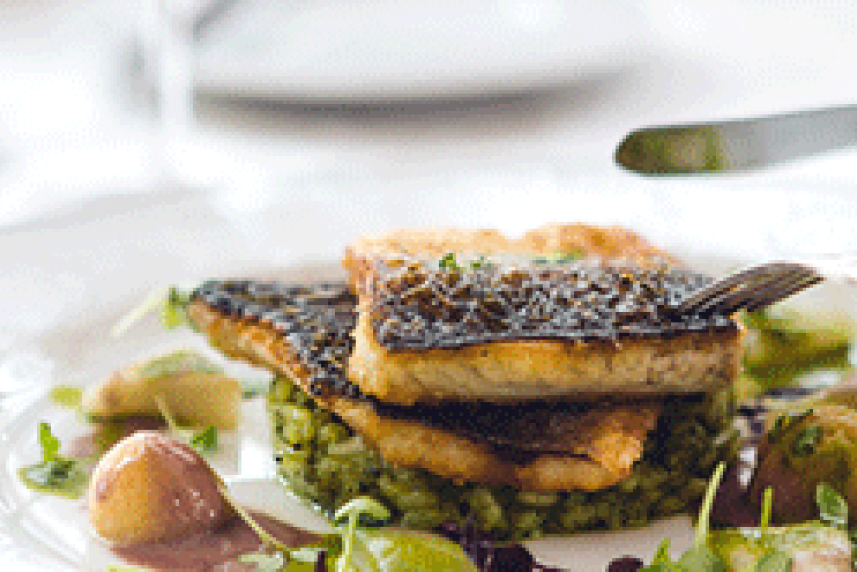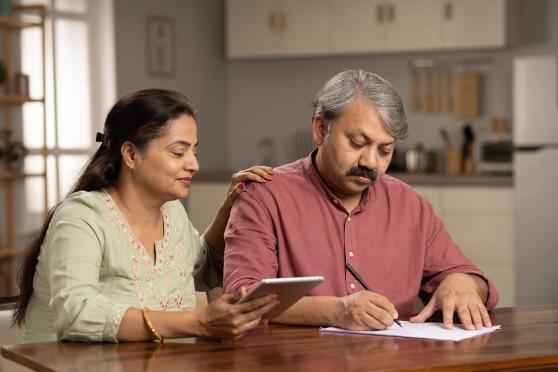Mindful eating to lose weight
Use this technique to feel full while eating less.

“Mindfulness” is a buzzword these days, but can it actually help you eat better? Eating mindfully means exactly as it sounds: fully paying attention to every sense while you’re eating, including sound, taste, and smell.
When eating mindfully, “people find that they don’t need as much,” says social psychologist Ronna Kabatznick, PhD, a board member of the Center for Mindful Eating. The problem with contemporary eating practices, she says, is that people eat too quickly and overeat. Inject a little mindfulness into eating, and you’ve got a recipe for weight loss.
Small daily practices add up to long-term success since healthy weight loss happens over time. Try these simple tips to get started as a smarter eater.
1. Use a Smaller Plate
Grab a salad plate for your main course the next time you hit the buffet, and you’ll likely eat less. Dish size affects the amount of food people serve, report researchers from Cornell University’s Food and Brand Lab. A smaller dish leads to underserving, while a larger dish prompts overserving, says study author Koert Van Ittersum, PhD. Trick your mind with a small dish, and smaller portions will follow.
2. Skip TV Watching While Eating
Ever sit down in front of the television with a meal and, come commercial break, wonder where all the food went? Watching your favorite show during your lunch break has been shown to increase afternoon snacking because it is associated with reduced lunch memory. "Watching TV distracts us from what we are eating, which means we have a poorer memory of the lunch and this [is] factored into decisions about eating,” says Suzanne Higgs, PhD, a research psychologist and author of the study. It’s time to click off before digging in.
3. Give Yourself Visual Cues
When you’re eating at home, leave yourself clues on the plate to help remind yourself of what you’ve eaten. When you snack, try a nut with shells, like pistachios, and leave the shells in a dish on the counter. Eat bone-in proteins, like a chicken breast, so that there is visual evidence on the plate that you’ve eaten a sufficient portion. Even when you throw these remnants out, that process will reaffirm that you’ve had a snack or a meal.
4. Have an Attitude of Gratitude
One reason people experience bottomless hunger is an emotional, insatiable need for more. “You’re never going to get the perfect meal,” says Kabatznick, “but whether you have the best meal or the worst meal, really mindful eating is appreciating what we have and why it’s on the plate.” Consider how your food was grown, how it was prepared, and how it was transported through different means to the table. When you regard food as something more than just fuel, says Kabatznick, you’ll be more inclined to slow down and appreciate what you have without wanting more.
5. Make a Mealtime Obstacle Course
The power of gratitude is one path to mindful eating, but there are other, less-than-Zen ways to approach mindful eating. Eating with your non-dominant hand is a great way to start, says Kabatznick, because the physical difficulty of switching hands forces you to slow down and think about what—and how—you’re eating. Make your next meal interactive, with components that you assemble at the table like a veggie taco bar or lettuce wraps. The more time you spend with your food, the less likely you’ll be ruled by cravings.


